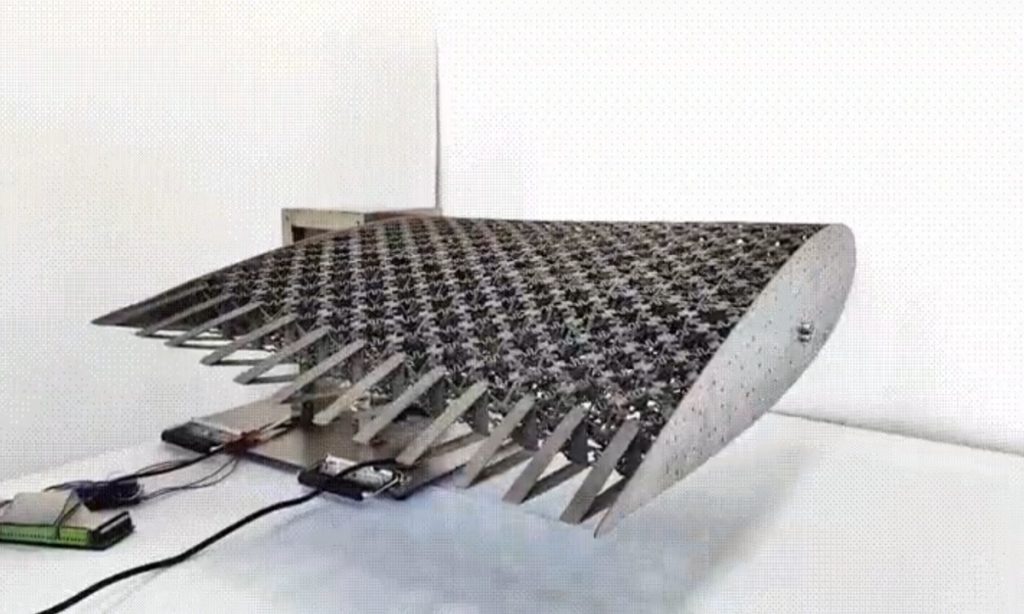China verifies new morphing wing structure for future cross-domain aircraft

China recently verified a new morphing wing structure that can help build future cross-domain aircraft, with an expert saying on Tuesday that the cutting-edge technology is expected to undergo flight tests before being applied.
The Aircraft Strength Research Institute of China, a subsidiary of the state-owned Aviation Industry Corporation of China (AVIC), successfully completed the theory verification on a full lattice distributed morphing wing structure based on mechanical metamaterials last week, AVIC said in an announcement posted on Sina Weibo on Monday.
During the verification, the morphing wing structure achieved distributed active torsional morph control, made breakthroughs in multiple core technologies including performance characterization of the mechanical metamaterials, cellular configuration design, reversible assembly of lattice structures, multi-point morph sensing and collaborative control, according to the announcement.
A video clip attached to the announcement shows a scaling model of a half-hollow lattice distributed wing structure changing its shape dynamically.
Wang Ya'nan, chief editor of Beijing-based Aerospace Knowledge magazine, told the Global Times on Tuesday that morphing wing is cutting-edge technology that enables aircraft to flexibly change form without using rigid rudder structures currently used on aircraft, which can only make limited moves in controlling the aircraft.
Morphing wing is like wings of birds that can make changes without many restrictions, enabling fine tunings, so it can provide better control over the aircraft, Wang said.
The technology can provide support to the design of future cross-domain variable geometry aircraft, AVIC said in the announcement.
A cross-domain aircraft is a type of aircraft designed to fly at very different altitudes, from low altitudes with dense atmosphere to high altitudes with thin air, as well as at very different velocities, from subsonic speeds to hypersonic speeds, Wang said. "This requires the aerodynamic shape of the aircraft to adjust based on the changes of the environment."
To achieve this goal, variable-sweep wing was developed, but it is still a rigid structure with limitations, Wang said, noting that the morphing wing can make flexible changes that can adapt to more flight environments, as long as the requirements of materials and structures are met.
Wang said he does not expect the new technology to be put into application any time soon, as he expects the morphing wing structure to undergo flight tests on demonstrators first, before being put on genuine aircraft for verification.